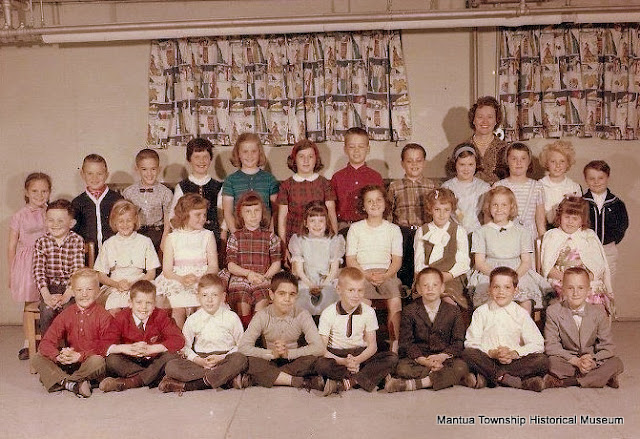147 years ago today a reporter writing under the pen name "Washtenaw" ran a two-column story in the Philadephia Evening Telegraph about his experiences at the Bethel Camp Meeting in Mantua Township. Bethel was a religious revival meeting/ community/ camp/ vacation/ event that took place for two weeks every August for decades in the woods that once grew where the "Snowy Owl" development now stands. Long before the Pitman Airport that preceded Snowy Owl the campground was there. And though it is difficult to picture now, tens of thousands of people fled the heat of the city for this shady camp meeting.
Bethel meeting took its name from the Bethel Methodist Church, which still stands on the Delsea Drive in Hurffville, its sponsoring congregation. John Turner, a prominent member of that church and extensive Mantua Township landholder, lived on Tyler's Mill Road and donated part of his land for the camp meeting.
This type of gathering has largely gone by the wayside, but in the days before large buildings that could hold several thousand participants, it was the only feasible way to hold such large meetings. And before air conditioning, a wooded setting was a welcome environment in the August heat.
Bethel Camp Meeting started as a local revival center. The entrance to the camp was a dirt road leading from Tyler's Mill Road. But after the railroad came to Mantua Township attendees began flooding in from the city, and the event grew dramatically in size. Railroad owners built a special platform alongside the tracks that was only used when the camp was open.
Our reporter opened his story by describing the location of the camp and the size of the crowd. The "Barnsboro Station" in the article is located where the old Sewell train station now stands. The town of Sewell had yet to be created.
In the next section of the article the reporter describes the difficulty in getting to the camp on the train (and on the train in the first place).
I took these pictures this morning. I wonder if I was walking on what's left of the "narrow roadway leading into the woods" mentioned above. The depth and width of the path show it is an old, well-established way that was once heavily traveled.
In the following section the reporter describes the sleeping accommodations. Civil War surplus tents figured prominently.
In the next section the reporter presents an evocative account of the camp at nighttime. It speaks to the very reason for the camp meeting, and the age-old desire of human beings to find inner peace. The description of how they provided light for the camp is interesting.
Late night hymn singing:
Our reporter did not spare the water sellers, who plied their trade (even on the Sabbath) to a hot and dusty crowd.
Perhaps the scarcity of water was one of the reasons that the Bethel Camp waned in popularity over the next three decades while the newer camp meeting destination, the Pitman Grove, grew. For years the two meetings both took place every August--on different weeks, out of respect for each other's events. Pitman's meeting had plentiful water, with Alcyon Lake nearby, and that may be one issue that turned the tide in its favor. As we know, a town grew up around the Pitman Grove, while Bethel Camp meeting disappeared into the mists of history.
A "small stream" back of the camp a quarter mile: this would fit the bill.
The next section outlined the daily schedule in camp.
Imagine a Sunday morning with hundreds of people, alone and in family groups, walking along the railroad tracks south for a mile and a half from Barnsboro Station. Since trains could not stop at the camp meeting platform on Sundays, this was the scene.

The reporter found the camp physically uncomfortable and seems to have been glad to be making his escape before the meeting concluded.
The rapid growth of Bethel Camp Meeting in the years following the Civil War was driven by promoters who saw an opportunity to sell railroad tickets. Note the name of the agent who ran this ad the year previous to our reporter's visit in the Evening Telegraph:
Bethel Meeting died away sometime in the late 1800s, no longer able to compete with the success of the Pitman Grove. By 1900, according to maps I have seen, most of the trees the reporter described seem to have been cut down. And then it was a nursery, and an airport, and a housing development. But plenty of trees remain on the slopes leading down to the stream. As I walked alone in the shade among the beeches this morning, it was cool and refreshing--especially for a day in August.





































